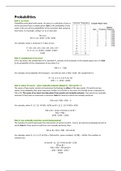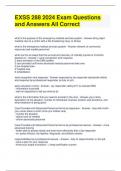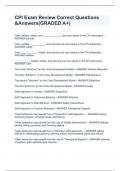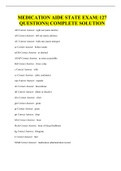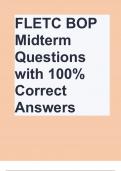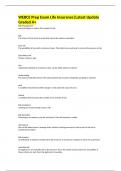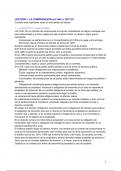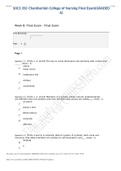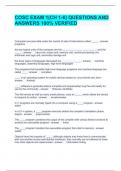Summary
Summary Analytics B&G 2017/2018 - Exam: all you need to know
- Module
- Institution
- Book
This summary is all you need to take with you to the open book exam. Every mandatory subject from the book 'Business Analytics' from James R. Evans plus extra information is in this summary. It tells you how to solve each question step-by-step, including the 'trick questions'. The lectures are know...
[Show more]
